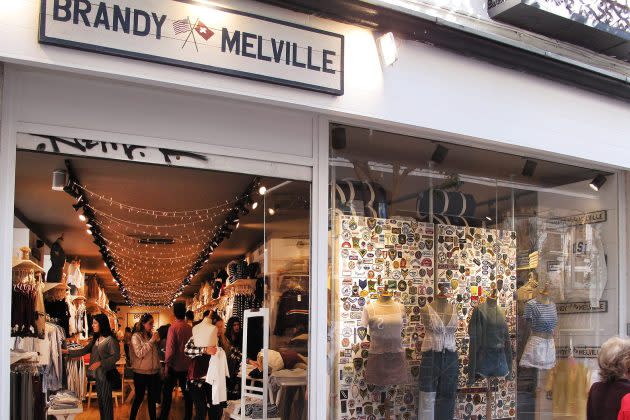In the glitzy world of fast fashion, where trends come and go with dizzying speed, Brandy Melville stands out as a beacon of teenage allure. But behind the facade of painted wooden signs and soft baby-tees lies a sinister truth, one that filmmaker Eva Orner unveils in her HBO documentary, “Brandy Hellville & the Cult of Fast Fashion.
Orner’s exposé pulls back the curtain on Brandy Melville’s shadowy operation, revealing a company that profits off female insecurity while perpetuating racism, sexism, and antisemitism. Through interviews with former employees and investigative reporting, Orner paints a damning portrait of a brand that preys upon vulnerable teenagers, exploiting their bodies and labor for corporate gain.
At the heart of Brandy Melville’s modus operandi is its recruitment process, which targets young girls who fit a narrow, idealized standard of beauty. Candidates are selected based on their appearance and social media presence rather than any skill-based qualifications, creating a workforce that is predominantly thin, white, and under the age of 18. Staff members of color are often relegated to menial tasks, while those who do not conform to the company’s beauty standards risk being hired or fired based on their appearance alone.
The documentary also delves into Brandy Melville’s unethical labor practices, from crowded factories in Prato, Italy, to the environmental devastation wrought by mass production. Former employees reveal how higher-ups would buy non-Brandy shirts off their backs to replicate and mass-produce designs, leading to copyright infringement lawsuits and settlements out of court.
But perhaps most disturbing of all is the complicity of social media platforms like Instagram, Tumblr, and TikTok in perpetuating Brandy Melville’s exploitation. As Orner points out, young girls are being exploited by companies to promote their products for free, unwittingly doing the work of corporations who profit at their expense.
Despite these revelations, Brandy Melville’s revenue remains largely unaffected, a testament to the power of branding and the allure of fast fashion. But as Orner emphasizes, there comes a point where consumers must confront the ethical implications of their purchasing decisions. In a world where information is readily available, ignorance is no longer an excuse.
Orner’s documentary serves as a wake-up call, urging viewers to question the true cost of their clothing and the impact of their choices. By shedding light on the dark underbelly of fast fashion, she hopes to spark a broader conversation about consumer ethics and corporate responsibility.
As the credits roll on “Brandy Hellville & the Cult of Fast Fashion,” one thing becomes clear: the glamour of Brandy Melville is nothing more than a facade, masking a culture of exploitation and greed. It’s time for consumers to take a stand and demand accountability from the brands they support. Only then can we begin to dismantle the cult of fast fashion and build a more ethical and sustainable industry for the future.
